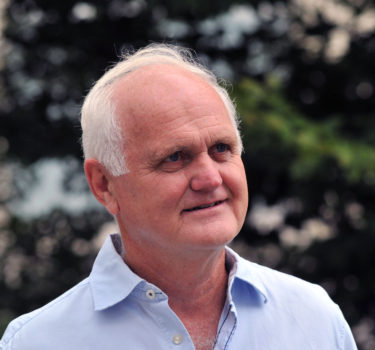Ed Fife (President 1987-1988)
The 1987-88 Council was dominated by a continuation of the grandfathering process which came about due to the passing of the OALA title act, Bill Pr37 in 1984 and, in many ways, was a continuation of the previous year’s Council under President Rick Moore. The legislation required that all those who considered themselves to be doing landscape architectural work prior to the Act should be considered for admission into the Association. I think it is fair to say that more people applied than we expected and each monthly meeting was accompanied by stacks of applications to be perused and on which admission decisions had to be made.

The influx of applications came from young people new to the profession, existing practitioners who had not previously joined and members from allied professions. The great majority of these applications were excellent. It was clear that they had the skills and experience to be grandfathered and many of these people have become strong, creative members of the profession. There were also applications which demonstrated limited levels of understanding of the profession and lacked experience. The critical question was: Where should the line for acceptance be drawn and once drawn how it could be defended if legally challenged? Ultimately, a line was drawn and one which restricted but few. I feel confident that the line we drew respected the intent and spirit of the legislation. Upon reflection, I would suggest that our concerns for design quality became secondary to issues related to health and safety. We knew we did not have the right to restrict an individual’s ability to earn a living within the field where she or he had previously been earning their livelihood. We also withstood two formal legal challenges that required strong support from our solicitor George Miller. Through the title act, the association grew in size and strength to become the second largest landscape architectural association in North America.
In addition to the grandfathering process, we handled other significant initiatives, including the restructuring of the Council and an expansion of the activities provided by the Association. Years had passed with little need for change but with the growth of the Association came the need for longer range planning, greater clarity and efficiency in its running and improvements in the area of member services. We tried to take stronger stands on public issues; increased publication materials both to members and in the public press. We entered discussions to establishing reciprocity with the American Society of Landscape Architects (ASLA), appointed our first Executive Director Dr. Arthur Timms, FCSAE, and initiated direct contact with students at each of the universities with President’s talks, pizza and beer. These sessions continue today.
As we divide our profession up into yearly achievements in the hope of understanding our history we must remember that we are a single, integrated entity. As in ecology we are growing, strengthening and correcting through time. We are now in our third or fourth generation of landscape architects working to build and preserve places which are thoughtful, creative, socially supportive and ecologically sound.
Ed Fife, OALA, FCSLA
